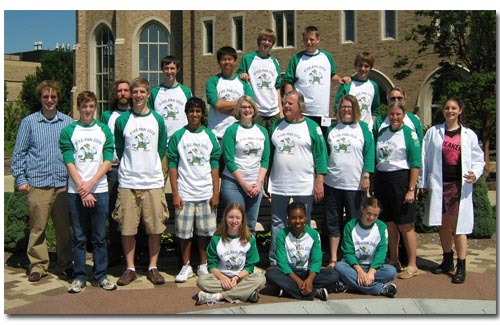Last week, a dozen students from South Bend area high schools participated in the fourth annual PIXE-PAN, a weeklong program for students and teachers interested in exploring topics in modern science, nuclear physics, and nuclear astrophysics. Teachers came from as far away as Georgia and Texas. Senior faculty and staff of the Institute for Structure and Nuclear Astrophysics (ISNAP) lectured and led hands-on experiments.
The program introduces participants to the fundamentals of the extremely small domain of atomic nuclei and its connection to the extremely large domain of astrophysics and cosmology, said Mary DeWitt, outreach specialist for the Joint Institute for Nuclear Astrophysics (JINA). The PIXE focus (Proton-Induced X-Ray Emissions) is an accelerator-based technique used to analyze art and artifacts.
At a closing symposium for friends and family, the students presented their work with PIXE, X-ray fluorescence (XRF), the Compton Effect, alpha spectroscopy and gamma spectroscopy. Students described using the techniques they had learned to investigate the mock murder of Michael Wiescher, the director of JINA. The crime scene investigation research analyzed metal and soil samples in search of the supposed killer. Visitors also toured the Jordan Hall of Science and attended a presentation in the Digital Visualization Theater.

